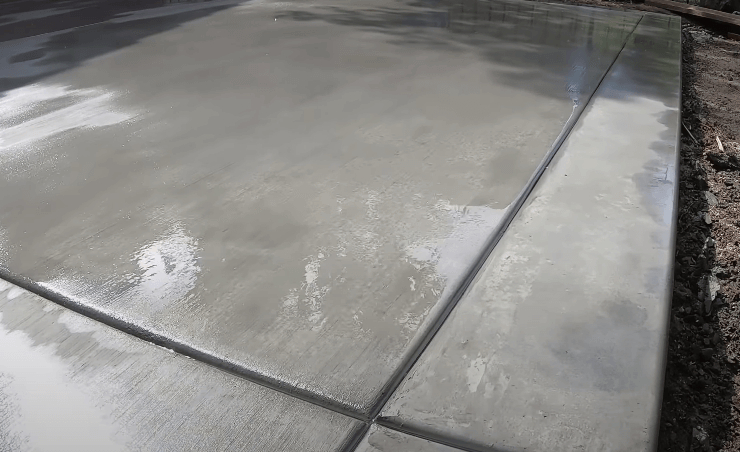The patio is a crucial component of modern backyards. The most common patio material in the nation is concrete. Concrete patios, which come in a variety of creative finishes, draw homeowners seeking an outdoor surface with limitless design options. A concrete patio is more durable and requires less upkeep when compared to wood decks, pavers, and natural stone.
SA Concrete Solutions provides advice on how to size and build a concrete patio, provides an overview of the several patio treatment options, and discusses how to embellish and improve your patio. For those who already have concrete patios, we also discuss how to resurface, stain, or engrave your old patio to give it a decorative facelift.
Can I Use a Concrete Patio In My Backyard?
For your patio, choose concrete for the following four reasons:
Spend less without giving up style
Concrete patios are often less expensive as an investment than patios built of brick or natural stone since they need less effort to install. Concrete is a cost-effective option for the majority of budgets due to its reduced price as well as the abundance of patterns and colors it offers. Additionally, concrete is simple to mould into any shape to fit backyard space limitations.
Enjoy a long-lasting, low-upkeep surface.
A decorative concrete patio in your backyard is another investment that will enhance the appearance of your landscaping and give you many years of enjoyment. Concrete is resilient to even the worst weather conditions and is simple to maintain. There won’t be any joints between units, unlike with paving stones, where weeds and grass can grow. And unlike wood, concrete won’t decay, warp, or need to be stained on a regular basis.
Establish a space for entertaining outside.
Concrete patios enable homeowners to effortlessly combine inner and outside living spaces in addition to acting as a meeting place for relaxing and entertaining. They make the ideal decorative flooring material for outdoor living spaces and kitchens that include comfortable seating areas, fireplaces, and water features.
Add color and pattern to your customization.
Additionally, there are countless design possibilities with this outdoor floor. Concrete patios can be color harmonized to fit a home’s exterior or landscaping when enhanced with stains and intrinsic colors. They can also be embossed or stamped with designs that imitate those found in common paving materials like brick, flagstone, slate, and tile.
Pros & Cons OF A Cconcrete Patio
Prior to about ten years ago, the majority of patios were constructed of hard materials like concrete, brick, or stone. Due to decaying or warped wood, or simply because they are tired of the trouble of staining and sealing them every few years, many homeowners who originally installed those wood decks now need to replace them. As more homeowners become aware of the advantages that wood or wood-composite decking lacks, concrete or concrete paver patios are making a major comeback. Some of the explanations for the changeover include the following:
Versatility
Your patio will never look exactly like your neighbor’s since concrete lends itself to a variety of design options. Patios made of poured-in-place concrete are now more adaptable than ever thanks to recent developments in coloring methods and stamping equipment. Concrete is easily shaped into any shape, so you can integrate appealing curves or account for backyard space limitations. You may also produce just about any shade possible with the use of stains and other coloring techniques, whether you want to match the stone facade of your house or blend in with the surrounding environment.
A wide range of pattern and design options are also available, such as stamped designs, stenciling, engraving, exposed aggregate, and more. Some homeowners choose a concrete patio type that compliments their inside living area rather than the outer environment, which results in a surface that merges in seamlessly with the interior decor. Brick, natural stone, and even wood may all be made to look like other common patio materials with concrete.
Durability
Concrete is extremely durable and can withstand the diverse variety of weather conditions seen across the nation in addition to its adaptability. In fact, many concrete contractors in chilly regions go above and above to guarantee the longevity of the concrete patios they build.
Easier Maintenance
Concrete is simpler to maintain due to its solid surface compared to separate masonry pavement components and natural stone. There won’t be any sand-filled joints between units, unlike with paving stones, where grass and weeds can grow. Additionally, individual pavers may settle unevenly, posing a risk for tripping.
Environmentally Friendly
Instead of building a wood deck, install a concrete patio to save on lumber and get rid of the need for ongoing upkeep using solvent-based wood paints and sealers.
Better Value
Concrete can be embossed, stenciled, stamped, or textured to mimic more expensive stone or brick pavers, frequently at a fraction of the price—especially when labor savings are taken into account. Your home’s market value will increase as a result of decorative concrete’s durability and visual appeal.
Make Your Patio a Backyard Destination
Concrete is a fantastic patio material, but it can also be used to make the most of the entire backyard area. In order to do this, the garden will have destinations that are connected by hospitable walkways. To create interest at various spots and entice visitors outside into the yard space, use focal points, seat walls, fountains, ponds, arbors, fireplaces, fire pits, and fragrant flora.
